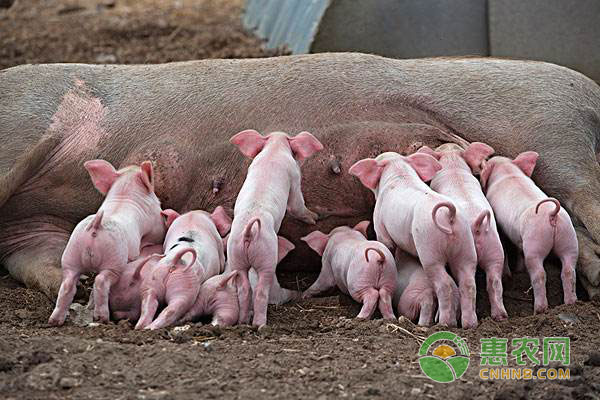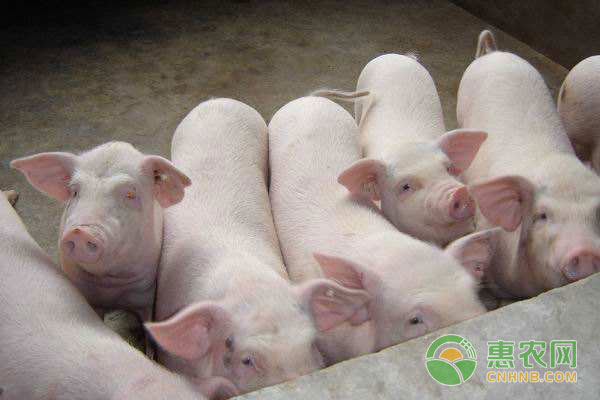Pig raising skills: how to do pig blood?
In pig production, the observation of feces can often have a preliminary understanding of the health of the herd, such as the softness and hardness of the feces, color, smell, different states, the digestive function of the digestive system, so as a farmer Special attention should be paid to the state of feces during routine inspections of pig houses and a reasonable analysis.

Today we talk about a condition of abnormal feces, that is, blood in the stool. What is the reason for this? How to deal with this situation? According to the state of feces, it is divided into dry blood and loose blood, which is divided into reddish blood according to blood color, and dark red or black blood.
Dry stools with blood, often accompanied by pus, is the dry stool on the surface of the pus mixed bloodshot, which is caused by constipation of rectal inflammation. The dark red color in the loose stools indicates the middle part of the intestine, mainly the ileum, which is ileitis.
The blood in the stool is bright red, suggesting that the end of the intestine is bleeding, mainly in the colon stage. It is colitis, which is the most common "pig bloody".
If the pigs only have black soy sauce-like stools and the body surface is whitish, the appetite is weak, generally suggesting that the stomach is bleeding, there are acute and chronic types. Stomach hemorrhage and rectal injury are relatively rare, and generally show a sporadic state, which will not cause great harm to pig production. The clinical cause of raising pigs is that ileitis caused by Lawsonia intracellularis and colitis caused by Treponema pallidum.

How to distinguish between these two diseases?
1, the difference in bleeding sites, the color of blood in the stool is somewhat different
The site of ileitis is located in the ileum stage. When the blood is excreted, it passes through a relatively long intestine. Because of the action of enzymes in the digestive tract, the blood is denatured and becomes dark red or black. After bleeding from colitis, the blood can be quickly excreted, so most of what we see is bright red blood. However, some acute episodes of inflammation also present acute bleeding, which is bright red and is not easily distinguished from colitis.
2. Hemorrhagic disorders are different in the stage of the herd
Intracellular Lawsonia is more likely to infect pigs or gilts in the middle and late stages of fattening. Treponema is more likely to infect piglets that are just weaned or pigs that are in pre-conservation. Therefore, the diagnosis can be distinguished by different age stages of blood drawing. Blood stasis within 70 days of age is colitis caused by Treponema pallidum infection, and blood stasis occurring at 70 days or older including gilts is ileitis caused by Lawsonia intracellularis.
Vitamins are a type of trace organic substances that humans and animals must obtain from food in order to maintain normal physiological functions. In terms of physiological functions, vitamins are neither a raw material for tissues nor a substance for supplying energy, but they are an indispensable substance for the body. It has many types and different chemical structures. Most of them are the components of the coenzyme (or prosthetic group) of certain enzymes. They are the indispensable compounds for maintaining the normal growth (growth, health, reproduction and production function) of the body. It plays a catalytic role in the body to promote the synthesis and degradation of major nutrients (proteins, fats, carbohydrates, etc.), thereby controlling metabolism. Vitamins are essentially low-molecular organic compounds. They cannot be synthesized in the body, or the amount synthesized is difficult to meet the needs of the body, so they must be supplied from the outside. The daily requirement of vitamins is very small (usually measured in milligrams or micrograms). They are neither a raw material for body tissues nor a substance for energy supply in the body. However, they do not regulate material metabolism, promote growth and development, and maintain physiological functions.
Vitamin K2 MK-7, Vitamin C, Vitamin E, Vitamin K2, Vitamin H, Vitamin D3
Xi'an Gawen Biotechnology Co., Ltd , https://www.ahualyn-bios.com